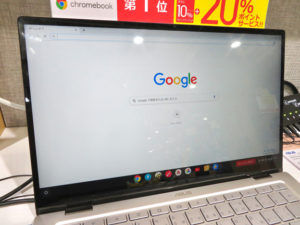Video
Thin Clients
Thin Clients

Google Chromebooks were originally thin clients that only functioned when connected to the internet.
Thin clients are devices that are primarily designed to connect to and interact with a server. The device often has a small hard drive or none at all, as data and programs are primarily stored in cloud / on the network’s main servers.
Thin clients have limited functionality and most features do not function when connected to the network.
Advantages
- Devices are generally cheaper to purchase and maintain than thick clients, as they have fewer hardware requirements and software is installed and maintained centrally on the server.
- Software is faster and easier to upgrade as the upgrade to configured on the server and pushed seamlessly to the device.
- Thin devices can be more secure as fewer locally installed programs are used and therefore there are fewer attack vectors.
Disadvantages
- The devices are largely or completely useless when not connected to the network
- Software that is CPU or GPU intensive will not function well on thin devices
- If the central network goes down then all the devices will fail to function.
Thick Clients
Thick Clients
A thick client is a device that functions like a standard computer, with most processing occurring on the client itself. This often includes tasks such as video encoding and graphics intensive tasks.
Advantages
- These devices can largely retain their functionality when not connected to the internet / central network.
- They don’t rely on external servers to process tasks and therefore there is no network related lag.
- These devices are more adaptable to different uses and software can be installed locally.
Disadvantages
- Thick clients tend to be more expensive to buy and maintain due to the high hardware requirements for each device.
- They are generally less secure as software locally installed can be compromised.
- Software updates are slower and more difficult to implement as each device needs to be updated individually.